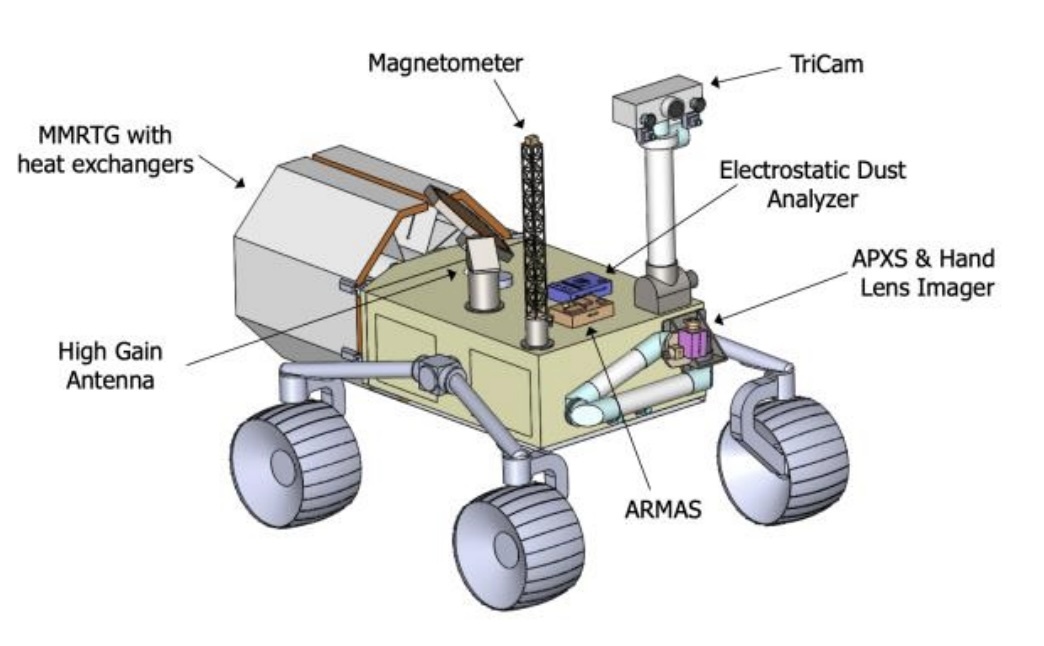Travelling to Mars has its own challenges. The distance alone makes the journey something of a mission in itself. Arrive though, and the handwork has only just begun. Living and surviving on Mars will be perhaps humans biggest challenge yet. It would be impossible to take everything along with you to survive so instead, it would be imperative to ‘live off the land’ and produce as much locally as possible. A new rover called AgroMars will be equipped with a number of agriculture related experiments to study the make up of the soil to assess its suitability for growing food.
Growing food on Mars poses a number of challenges, chiefly due to the harsh environmental conditions. Not least of which is the low atmospheric pressure, temperature extremes and high radiation levels. To try and address these, new techniques have been developed in the fields of hydroponics and aeroponics. The key to these new techniques involves using nutrient rich solutions instead of soils.
Special structures are build analogous to greenhouses on Earth with artificial lighting, temperature and humidity control. Genetic engineering too has played a part in developing plants that are more hardy and capably of surviving in harsh Martian environments. As we continue to explore the Solar System and in particular Mars, we are going to have to find ways to grow food in alien environments.

Enter AgroMars. A space mission taking a rover to Mars to hunt for, and explore the possibility of establishing agriculture on Mars! The rover will be launched with similar capabilities to the likes of Perseverance or Curiosity. The rover will be launched to Mars by a Falcon 9 launch vehicle operated by Space X but this is some years off yet. The development phase has yet to start. In a paper by lead author M. Duarte dos San- tos the mission has been shaped, reality is a little way off.
On arrival, AgroMars will use an X-ray and infrared spectrometer, high resolution cameras, pH sensors, mass spectrometers and drilling tools to collect and analyse soil samples. The samples will be assessed for mineralogical composition, soil texture, soil pH, presence of organic compounds and water retention capacity.
To be able to assess the Martian soil the rover must possess advanced capabilities for collecting and analysing soil samples, more than before. The data will then be sent on to laboratories on Earth and it is their responsibility to interpret the information. The multitude of groups involved is a wonderful reminder how science transcends geographical borders. Working together will yield far better results and help to advance our knowledge of astrobiology and agriculture on Mars.

This doesn’t come cheap though. The estimated cost of the mission is in the region of $2.7 billion which includes development, launch and exploration for the entire mission.
The total cost of the mission is estimated to be around $2.7 billion, which includes $2.2 billion for the development and launch of the rover and $500 million for its exploitation during the entirety of the mission. Whether it – pardon the pun – gets off the ground is yet to be seen but if we are to explore and even establish a permanent base on Mars then we will have to gain a better understanding of the environment to feed and sustain future explorers.
Link :


Fascinating topic chock full of scientific information; but the narrative is full of errors (spelling, punctuation, syntax, grammar) and hard to read. If this article was written by AI, it is bad AI. Or at least the AI needs a high school English course. I realize these articles are not formal scientific papers; but presentation matters. And, unfortunately, this is not the first article on Universe Today with these problems.
I would make this offer to you. I would be happy to review and edit draft articles, and make simple, non-substantive corrections and edits to correct errors. My contribution to the cause. I’m mostly retired and work remotely, so could provide quick turn-around. I’ve worked as an editor in the past, and have spent nearly fifty years as a lawyer submitting written material to courts and clients. We all make mistakes. A “second pair of eyes” can often spy and correct those errors. Feel free to contact me at the email address in my profile.